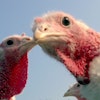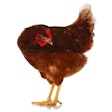
Highly pathogenic avian influenza (HPAI) continues to be present in nearly every continent, including the Americas, Europe, Asia and Africa.
And while HPAI has not been detected in Antarctica, it has been found in South Georgia Island, which is in the Antarctic region.
That leaves Oceania – with Australia and New Zealand as its biggest land masses – as the one area that has been untouched by the virus.
While speaking during the Poultry Market Intelligence Forum during the International Production & Processing Expo (IPPE) in Atlanta, Georgia, on January 31, Dr. David Swayne, consultant, Birdflu Veterinarian LLC, discussed why the virus has not yet reached those islands. However, he also stated that it could still happen.
Why HPAI hasn’t reached Australia, New Zealand
The countries of Oceania may be geographically close to southeast Asia, but Swayne said Oceania has a “separate avian influenza ecozone.”
In addition to Oceania and Asia being divided by water, the two geographical areas are also divided by an invisible faunal line known as the Wallace line.
“It’s an ecological barrier that changes the migratory pattern of a lot of aquatic birds, and to this point, at least when studying avian influenza viruses, is a barrier. What happens in Asia, doesn’t always go into Australia,” said Swayne.
Is an HPAI’s spread into Oceania still possible?
Swayne said there are two reasons why people shouldn’t be dismissive of HPAI’s potential to spread into New Zealand or Australia.
Since the virus has already been confirmed in the arctic region, it could spread into Antarctica proper, and further spread into Australia or New Zealand from the south, Swayne said.
He also noted that there could be “big changes in the ecology of the virus” which could infect species of birds that hadn’t been previously affected, that could make their way into the Oceania region.
Prior to his work with Birdflu Veterinarian LLC, which began in January 2023, Swayne spent 28 years as the United States Department of Agriculture (USDA) Southeast Poultry Research Laboratory director.
View our continuing coverage of the global avian influenza situation.



















